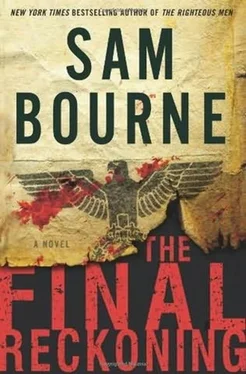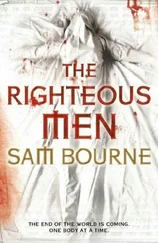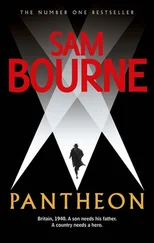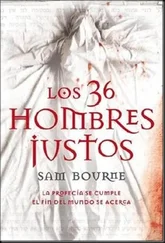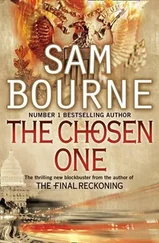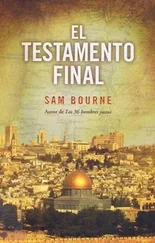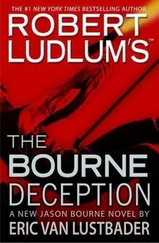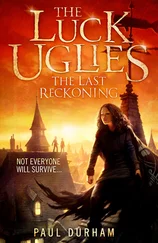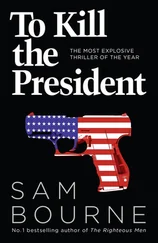So began my journey, armed with the right Aryan identity papers and a travel document for Warsaw. I can't remember if I pretended to be fifteen or older or younger, but the truth is that I was just a twelve-year-old boy travelling alone through Europe in wartime, showing that precious Kennkarte to Nazi border guards in Marijampolé and Suwalki and Bialystok, over and over again. The Kennkarte made everything possible. It was not a forgery, but the real thing. With that paper in my hand, I was an Aryan. No document was more precious.
And finally I pulled into Warsaw. It was midday and the place was bustling, but no one was going where I was going. My destination was the Warsaw ghetto. Most people then were desperate to break out of the ghetto: I was the only one who wanted to get in.
I dug into the hole I had made in the lining of my coat, the place where I had hidden my yellow star, and pinned it back on. I waited for a group of workers to return and I tagged along. Shimon had promised it would be like Kovno: workers only had to show papers when they went out, not when they came back in.
And so now I was inside streets as crammed and infested with disease as the ones I had left behind. There were corpses in the gutter here, too. But I found the house I was looking for and told them who I had a message for.
‘Tell us and we'll tell him,’ they said.
‘I can't do that,’ I said. ‘I have to give the message to him and to him alone.’ And so I waited.
It was only after the war that I discovered what had prompted my mission, why those three men in the candle-lit cellar sent me away that night. My mission was a response to something that had happened three days earlier.
Some Jews working outside the ghetto had seen a young girl, barely clothed, her eyes wild and staring. She was covered in dirt and smeared with blood; she could say nothing and her face twitched and shook like a mad woman's. They brought her back to the ghetto and once she had been dressed, and had managed to eat and drink a little, she eventually began to speak, though the words came slowly.
She had been one of those pushed to the right at Demokratu Square, along with my sisters. The selection had gone on all day, past nightfall, Rauca on the mound, smoking his cigarette or eating his sandwiches, all the while judging the column of people that shuffled before him, ignoring their cries and blocking out their pleas. Eventually there were ten thousand of them, pushed through a hole in the fence into an area known as the ‘small ghetto’. Some had felt relieved, concluding that this had been nothing more than an elaborate exercise in rehousing. Apparently, people began to argue over who would get which apartment; committees talked through the night, planning for their new lives.
But at dawn the next morning, they realized their mistake. Lithuanian militiamen burst in and began beating and pushing the Jews out of their new homes, herding them into a column and ordering them to march. They were to make the four-kilometre trek to the Ninth Fort, the old encampment built in Tsarist times and designed to keep the Germans out.
It was an uphill walk and it took hours; the aged and the sick falling by the wayside, sometimes helped to their deaths by the rifle-butt of one of the militiamen. The route was lined, from beginning to end, with local Lithuanians, curious to see these strange creatures emerging from the ghetto – just as they had been curious to see us all led inside.
The Nazis had a name for this route. They called it: Der Weg zur Himmelfahrt. The Way to the Heavenly Journey.
They did not arrive till noon and once they had there was no respite. The Lithuanian thugs were quick to grab any jewellery, pulling off earrings and bracelets, and then ordering the Jews to strip naked. Only then did they lead them to the pits.
These were vast craters dug into the earth. Some said they were one hundred metres long, three metres wide and perhaps two metres deep. Others said they were not as long, but twice as deep. Each one was surrounded on three sides by small mountains of earth, freshly dug. On the fourth side, there was a raised wooden platform. And it was here that the SS men stood with their guns.
Those who had survived the march now began to scream; they understood where this heavenly journey had led them. Some tried to escape but they were shot instantly. And so the killing began.
First the Nazis tossed the children into the pit; then the machine gunners, in position for precisely this purpose, opened fire. The women were lined up at the edge of the crater and shot there, in the back, so that they would fall in on top of the children. The men were last.
They killed them in batches of three hundred, with no guarantee that one batch was finished when work began on the next. They had to work fast. Besides, ammunition was rationed so that the Nazis could not afford more than one bullet to the back per victim. And most of the gunmen were drunk.
The result was that many Jews were not dead when they fell; they were buried alive. This was the fate, especially, of the children. But not only them. Those who saw it told of how the pit moved for three days, how it breathed.
This is the event they call the ‘great action’ of October 28 1941, when ten thousand Jews were driven out of the Kovno ghetto and put to death.
And this is how my sisters were killed.
The girl who had found her way back, shivering and starving, to the ghetto, was one of those who had been buried but not shot. She had passed out as she fell, but some time later she had awoken to the realization that there were corpses all around her, above and below her. She was wedged in by dead flesh, pressing on her so hard it made her choke.
Most of those buried alive were too weak to climb out of the pits, to use the limbs of the dead as rungs on a ladder. They gave up and suffocated under the bodies. Those who did manage to haul themselves out were usually spotted and shot, and this time with no mistakes made. But this girl, she was nervous and cautious. So she waited till the middle of the night, when the drunken chanting and singing of the Nazi gunmen and their Lithuanian comrades had faded into sleep. And so she had escaped, out of the Fort and back to the ghetto.
This was the story she told once she was clothed and fed and could speak. And this was the story which had reached the leaders of the Jewish underground in Kovno, those men in the cellar. Perhaps for the first time they understood what kind of threat they faced. And so they had decided they must spread the word to those who were also trying to fight back. Which was why they sent me to Warsaw.
And so, many years later, I came to understand the meaning of the message I had carried. I also understood why the men in the cellar did not explain it to me. It was not just because I might be tortured. It was also because they did not dare tell me what had happened to my sisters. Perhaps they thought I would have been so blinded by anger, so broken, that I would not have been able to carry out my mission.
But I did carry it out and I met the man I was meant to meet in Warsaw. I waited for him for three hours, but I met him. He was the leader of the underground in the Warsaw ghetto; he too was a young man who looked old.
When I said the words, ‘Aunt Esther has turned up again and is at Megilla Street 7, apartment 4’ he looked bemused. But then he asked for someone to bring him a book, a holy book rescued from the ruins of a synagogue in the ghetto. It was the Book of Esther, which Jews call the Megilla of Esther. It is the book we read for the festival of Purim, which commemorates a plot many hundreds of years ago to destroy the Jews.
This leader of the underground turned to chapter seven, verse four and then he understood everything. He read it out loud, as if it would help him think. ‘“For I and my people are sold to be exterminated, slain and lost; but if we were only being sold as slaves and maidservants, I would have stayed silent”.’
Читать дальше
Конец ознакомительного отрывка
Купить книгу
